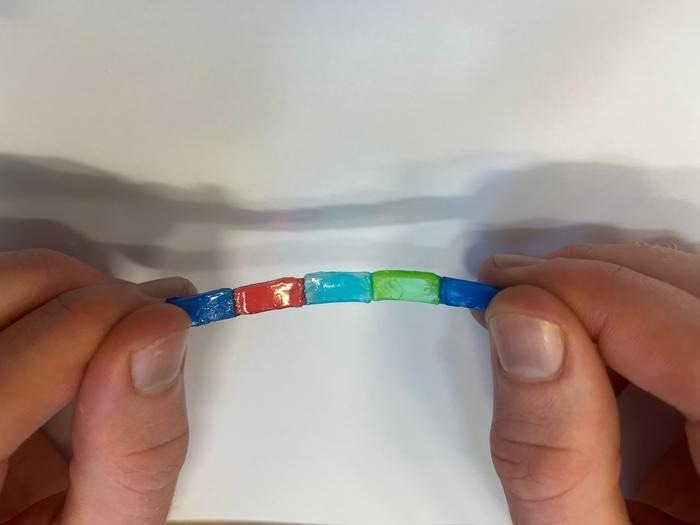Researchers from the University of Cambridge created soft, elastic “jelly batteries.” These batteries are used in wearable technology, soft robotics, or even as brain implants for the delivery of medication or the treatment of ailments like epilepsy. Researchers were inspired by electric eels, which use modified muscle cells called electrolytes to stun their prey. The journal Science Advances published this study.
 Researchers have developed soft, stretchable “jelly batteries” that could be used for wearable devices or soft robotics, or even implanted in the brain to deliver drugs or treat conditions such as epilepsy. Image Credit: University of Cambridge
Researchers have developed soft, stretchable “jelly batteries” that could be used for wearable devices or soft robotics, or even implanted in the brain to deliver drugs or treat conditions such as epilepsy. Image Credit: University of Cambridge
The jelly-like materials that the Cambridge researchers created have a layered structure that allows them to deliver an electric current, just like electrocytes. Think of them as sticky Lego.
For the first time, stretchability and conductivity have been integrated into a single material, allowing the self-healing jelly batteries to extend to more than ten times their initial length without losing any of their electrical properties.
Jelly batteries are made from hydrogels, three-dimensional networks of polymers with more than 60% water content. Reversible on/off interactions between the polymers hold the jelly together and regulate its mechanical properties.
Hydrogels are perfect for soft robotics and bioelectronics because they can accurately control mechanical qualities and replicate human tissue characteristics; nevertheless, they must be both conductive and flexible for such applications.
It is difficult to design a material that is both highly stretchable and highly conductive since those two properties are normally at odds with one another. Typically, conductivity decreases when a material is stretched.
Stephen O’Neill, Study First Author, Yusuf Hamied Department of Chemistry, University of Cambridge
Dr. Jade McCune, Study Co-author from the Department of Chemistry said, “Normally, hydrogels are made of polymers that have a neutral charge, but if we charge them, they can become conductive. And by changing the salt component of each gel, we can make them sticky and squish them together in multiple layers, so we can build up a larger energy potential.”
While jelly batteries employ ions to transmit charge, much like electric eels, conventional electronics use stiff metallic materials with electrons as charge carriers.
The hydrogels exhibit significant interfacial adhesion due to the formation of reversible links between the various layers through the usage of barrel-shaped molecules known as cucurbiturils, which resemble molecular handcuffs.
The molecular handcuffs create a strong adhesive between the layers, which permits the jelly batteries to be stretched without the layers separating and, more importantly, without losing any of their conductivity.
The jelly batteries are soft and conform to human flesh; their qualities make them a promising option for biomedical implants in the future.
We can customize the mechanical properties of the hydrogels so they match human tissue. Since they contain no rigid components such as metal, a hydrogel implant would be much less likely to be rejected by the body or cause the build-up of scar tissue.
Oren Scherman, Professor and Director, Melville Laboratory for Polymer Synthesis, University of Cambridge
Scherman led the research in collaboration with Professor George Malliaras from the Department of Engineering.
The hydrogels are unexpectedly robust and soft. They can self-heal when damaged and can tolerate being crushed without ever losing their original shape.
Future tests by the researchers will evaluate the hydrogels in living things to determine whether or not they are appropriate for a variety of medical uses.
The European Research Council and the Engineering and Physical Sciences Research Council, part of UK Research and Innovation, supported the study. Oren Scherman is a Fellow of Jesus College, Cambridge.
Journal Reference:
Stephen, O. N., et al. (2024) Highly stretchable dynamic hydrogels for soft multilayer electronics. Science Advances. doi.org/10.1126/sciadv.adn5142.